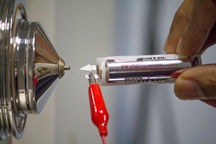Applied Biosystems/MDS Sciex is the Top Supplier in the Mass Spectrometer Market
Advertisement
According to a recent survey of life scientists using mass spectrometry (MS) in their research, Applied Biosytems/MDS Sciex is the leading mass spectrometer brand in all regions and market segments, followed by Agilent Technologies and Thermo Finnigan. Customers of these three leading brands are significantly more satisfied with their most recent mass spectrometer acquisition than purchasers of other brands - as compared to other market players such as Waters, Bruker Daltonics and PerkinElmer Life and Analytical Sciences.
These findings were recently published by BioInformatics, LLC in its latest report "Mass Spectrometry: Opportunities in the Life Science Market." Based on a survey of more than 600 scientists who use mass spectrometry (MS), the report provides a comprehensive look at researchers' experimental design, instrument specifications and future purchasing plans as well as assesses opportunities for suppliers to expand their reach into markets characterized by key parameters such as application, instrumentation type, sample complexity and throughput.
Suppliers in this market will benefit from the 19% of current mass spectrometer users who have plans to purchase a new instrument - the majority of whom will do so within the next year. These scientists are most likely to seek new mass spectrometers that have greater mass accuracy, the ability to perform more applications and greater sensitivity, and most respondents anticipate acquiring them from Applied Biosystems/MDS SCIEX and Thermo Finnigan. "Current brand usage and/or most recent MS purchase are strong predictors of future brand purchase, but are not absolute indicators. Other factors, such as research objective, MS applications and motivation for purchase will all enter into the decision to obtain one system as compared to another," predicted Dr. Robin Rothrock, Director of Market Research at BioInformatics, LLC.
A particularly noteworthy application for mass spectrometry is quantitative proteomics, which has important implications in several areas of research, including protein biomarker discovery and validation/screening. Numerous suppliers are already developing products - from labeling chemistries to sophisticated software - to meet the needs of this emerging market, which is predicted to grow among both current and future mass spectrometer users. "The difficulties associated with experimental design, interpretation of the results, and reagent/instrumentation cost remain significant barriers to widespread adoption. New approaches to labeling as well as novel software for data analysis and interpretation have been developed by suppliers to address these issues. However, given the nascent state of the market and the relatively small number of actual practitioners, methods for quantitative proteomics are still in flux," said Rothrock. To help suppliers overcome these challenges, the report explores quantitative proteomics techniques, including their adoption, scientists' satisfaction with them and the developments needed to encourage widespread use of this exciting technology.
The report also has implications for the suppliers of kits and reagents used in high performance liquid chromatography (HPLC), gel electrophoresis and other sample preparation techniques. While HPLC is the sample preparation protocol used most frequently by those surveyed, a handful of key MS applications such as protein digest analysis and multi-protein complex characterizations rely on more manual and labor intensive preps. Scientists conducting these analyses predominately utilize protein digestion and 1-D/2-D gels plus protein digestion, respectively, to prepare their samples, presenting suppliers with an opportunity to target their protein separation products to these researchers.
Most read news
Topics
Organizations
Other news from the department business & finance
These products might interest you

isoprime precisION by Elementar Analysensysteme
isoprime precisION stable isotope ratio mass spectrometer
The most flexible, yet powerful isotope ratio mass spectrometer ever created
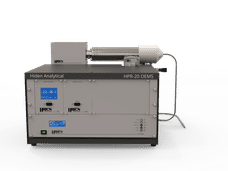
HPR-20 OEMS, Online Electrochemical Mass Spectrometer by Hiden Analytical
Online monitoring and quantification of evolved gases and vapours from electrochemical processes
A complete gas analysis solution, designed to integrate seamlessly with electrochemical applications
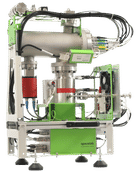
IonTamer ToF MS by Spacetek Technology
IonTamer instruments are time-of-flight residual gas analysers (TOF-RGA) for the analysis of gases
Compact Time-of-flight residual gas analyzer (TOF-RGA) for process analysis
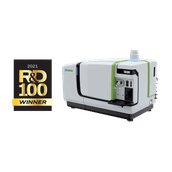
NexION® 5000 by PerkinElmer
NexION 5000 Multi-Quadrupole ICP Mass Spectrometer
NexION 5000 Multi-Quadrupole ICP Mass Spectrometer

Renting and Leasing Solutions for Laboratories by Bios Analytique
Specialists in the rental and leasing of scientific equipment for laboratories throughout Europe
Whether you have an unexpected requirement or limited budget, we have the perfect solution for you
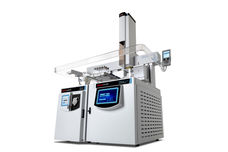
TSQ 9610 GC-MS/MS by Thermo Fisher Scientific
TSQ 9610 GC-MS/MS for superb sensitivity and selectivity with outstanding reliable productivity
Eliminate unnecessary, unplanned instrument downtime, save helium and maximize productivity
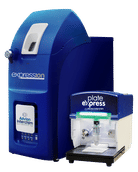
expression® Compact Mass Spectrometer by Advion Interchim Scientific
Mass Spectrometry for Chemists: Fast, Easy, Prep-Free Reaction Monitoring at the Bench
Featuring a variety of sample introduction techniques that also allow TLC/MS & direct probe analysis

Get the chemical industry in your inbox
By submitting this form you agree that LUMITOS AG will send you the newsletter(s) selected above by email. Your data will not be passed on to third parties. Your data will be stored and processed in accordance with our data protection regulations. LUMITOS may contact you by email for the purpose of advertising or market and opinion surveys. You can revoke your consent at any time without giving reasons to LUMITOS AG, Ernst-Augustin-Str. 2, 12489 Berlin, Germany or by e-mail at revoke@lumitos.com with effect for the future. In addition, each email contains a link to unsubscribe from the corresponding newsletter.
Most read news
More news from our other portals
See the theme worlds for related content
Topic World Chromatography
Chromatography enables us to separate, identify and thus understand complex substances. Whether in the food industry, pharmaceutical research or environmental analysis - chromatography opens up a treasure trove of information about the composition and quality of our samples. Discover the fascinating world of chromatography!

Topic World Chromatography
Chromatography enables us to separate, identify and thus understand complex substances. Whether in the food industry, pharmaceutical research or environmental analysis - chromatography opens up a treasure trove of information about the composition and quality of our samples. Discover the fascinating world of chromatography!
Topic World Mass Spectrometry
Mass spectrometry enables us to detect and identify molecules and reveal their structure. Whether in chemistry, biochemistry or forensics - mass spectrometry opens up unexpected insights into the composition of our world. Immerse yourself in the fascinating world of mass spectrometry!

Topic World Mass Spectrometry
Mass spectrometry enables us to detect and identify molecules and reveal their structure. Whether in chemistry, biochemistry or forensics - mass spectrometry opens up unexpected insights into the composition of our world. Immerse yourself in the fascinating world of mass spectrometry!



